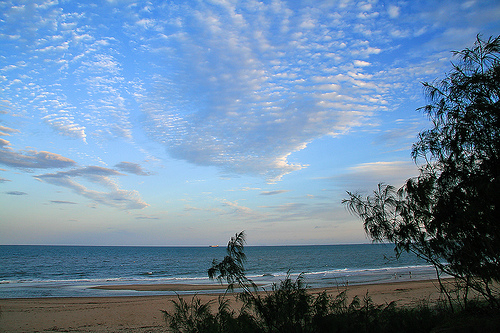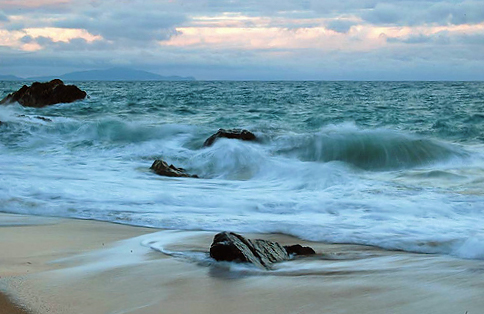One of the most important composition tips to take into account when photographing landscapes, is where to place the horizon. The position of a horizon within a photo’s composition can make a huge difference between seeing a good or bad result.
When photographing landscapes, before you position the horizon, you need to think about what it is you are taking a photograph of. Ask yourself whether it was the ground or the sky, that first took your eye.
For example, if it was water reflections on a beach that first took your eye, then make sure the ground area makes up 2/3 of your photo, placing the horizon within the top third of the image. On the other hand, if it was a beautiful cloud formation in the sky that made you want to photograph the landscape, then place the horizon within the bottom third of the image, so the sky takes up the top two thirds of the image.
A mistake many amateur’s make photographing landscapes, is that they cut the landscape in half by placing the horizon dead centre in the middle of the frame. At first, this would confuse a viewer, as it wouldn’t be clear what it is they are meant to be looking at. Is it the sky, or the ground area you are showing them?
Composition Tips. Photographing The Sky
Digital SLR Camera: Canon EOS 400D / Rebel XTi
DSLR Lens: Canon EF-S 17-85mm f/4-5.6 IS USM
Exposure: 0.04 sec (1/25)
Aperture: f/11
Focal Length: 17 mm
ISO Speed: 100
Exposure Program: manual
Why this image worked
When I went to the beach on this particular evening, it was the sky with it’s beautiful cloud formations that enticed me to take the photograph. Therefore, I placed the horizon line along the bottom 1/3 of the frame so that the sky would take up the top 2/3’s.
Composition Tips. Positioning The Horizon
Digital SLR Camera: Nikon D40
DSLR Lens: AF-S DX Zoom Nikor 18-55mm F/3.5- 5.6 G ED II (kit lens)
Exposure: 0.333 sec (1/3)
Aperture: f/29
Focal Length: 55 mm
ISO Speed: 200
Exposure Program: manual
Why this image worked
Considering in this case, it was the foreground of the beach and the crashing waves that was being photographed, the horizon line was positioned on the top 1/3 of the frame.
As you can see. When photographing landscapes, think of the story you want to convey before deciding where to position the horizon. Most times, if you have a strong foreground subject, this will tend to make the overall image much stronger. However, at sunrise or sunset the sky may be the main story, therefore you would include more of that area in the image.
Your overall composition in any image will make or break the connection with the viewer. With experience, photographing landscapes will become a breeze.
Sign-up for our online photography course and learn how to take better photos in easy to understand “at your own pace” lessons.
Click here for more information and sign-up details!

